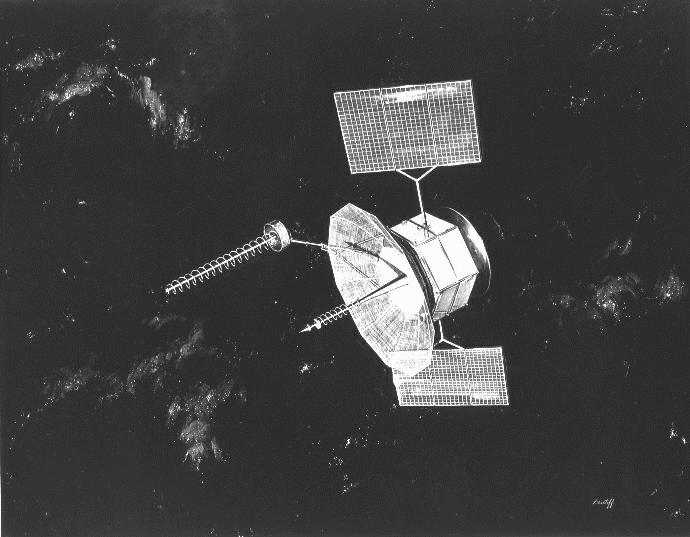Two separate launches on this date in space history, five years apart. First, 35 years ago today — February 9, 1978 — an Atlas-Centaur launched from Cape Canaveral carrying FLTSATCOM 1 (Fleet Satellite Communications One).

(FLTSATCOM satellite. USAF image from Wikimedia Commons.)
The FLTSATCOM system provided world-wide UHF communications for aircraft, ships, and submarines, with shore-to-fleet broadcast and beyond-line-of-sight capability. A few of its channels were used for emergency action messages and other communications with Strategic Air Command aircraft, the E-3A airborne warning and control (AWACS) aircraft, and so forth.
Five years later, on this date in 1983, an Atlas F launch vehicle out of Vandenberg AFB carried the latest Navy Ocean Surveillance Satellite (NOSS) to orbit. According to the National Space Science Data Center page,
It placed a cluster of one primary satellite and three smaller sub-satellites (that trailed along at distances of several hundred kilometers) into low polar orbit. This satellite array determined the location of radio and radars transmitters, using triangulation, and the identity of naval units, by analysis of the operating frequencies and transmission patterns.
The Space Review published an overview of the NOSS system in 2009, and this 2004 article notes that the formation-flying system may have been responsible for a number of UFO sightings. According to this recent Florida Today article, “None of the U.S. NOSS triplets remain in formation,” and the similar Chinese Yaogan 9A, 9B and 9C satellites “are the only intact example in orbit today.”






